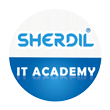CI/CD Pipeline Implementation enables Pakistani software teams to deliver faster, more reliable releases that meet international client expectations for zero downtime and rapid feature deployment. Pakistan’s software exports crossed USD 3 billion in FY2024 according to State Bank data, driven partly by teams that adopted automation practices matching global standards. As startups and software houses compete for export contracts, manual deployment processes create bottlenecks that automated pipelines eliminate. This practical guide walks Pakistani DevOps teams through designing and implementing CI/CD pipelines that transform deployment from risky, time-consuming manual work into predictable, automated operations.
Understanding CI/CD and Its Role in DevOps
Continuous Integration (CI) automates code integration from multiple developers, running tests automatically to catch conflicts and bugs immediately. Continuous Delivery (CD) extends this automation through staging and production deployments, ensuring code remains deployable at all times. Continuous Deployment takes the final step, automatically releasing every validated change to production without manual approval.
CI/CD embodies core DevOps principles: collaboration between development and operations teams, automation replacing manual processes, and continuous monitoring providing feedback loops for improvement. When developers push code changes, pipelines automatically build, test, and deploy—eliminating the traditional handoffs where errors multiply and deployments stall.
Benefits directly impact Pakistani software houses’ competitiveness. Shorter release cycles let teams respond to client feedback within hours rather than weeks. Reduced human error prevents the embarrassing bugs that damage client relationships and require emergency fixes. Improved feedback loops help developers identify problems immediately while context is fresh, rather than discovering issues days later when root causes become mysteries.
According to CNCF’s State of CI/CD Report 2024, organizations with mature CI/CD practices deploy 208× more frequently and experience 7× lower change failure rates than those relying on manual processes.
Key Components of a CI/CD Pipeline
Effective pipelines integrate multiple components working together to automate software delivery from code commit through production deployment.
Source Control through Git, GitHub, or GitLab provides version tracking and branch management. Every code change gets tracked, reviewed through pull requests, and merged systematically. Pakistani teams working with distributed developers across Karachi, Lahore, and Islamabad particularly benefit from Git’s collaboration features preventing code conflicts.
Build Automation using Jenkins, GitHub Actions, or GitLab CI compiles code and runs tests automatically whenever developers push changes. Jenkins pipelines or GitHub Actions workflows execute identical build processes every time, eliminating the “works on my machine” problem where code fails in production despite passing local testing.
Testing Stages include unit tests validating individual functions, integration tests ensuring components work together correctly, and performance tests catching degradation before users notice. Automated testing catches regressions immediately rather than discovering them in production when client operations are disrupted.
Deployment Automation handles releasing code to staging environments for final validation, then production environments serving actual users. For teams deploying to Kubernetes clusters, pipelines manage rolling updates ensuring zero downtime during releases.
Monitoring and Rollbacks through Prometheus, Grafana, or custom alerting provide visibility into deployment health. When issues emerge, automated rollback mechanisms restore previous versions instantly rather than requiring manual intervention while systems remain down.
End-to-end visibility lets managers and developers see exactly where code stands in the pipeline, who changed what, and whether deployments succeeded or failed—transparency that transforms operations from black boxes into observable processes.
Best Practices for Pakistani DevOps Teams
Implementing CI/CD successfully requires following proven patterns while adapting to Pakistan’s specific development environment and client requirements.
Infrastructure as Code (IaC) using Terraform or Ansible ensures reproducible environments. Rather than manually configuring servers with variations that cause mysterious deployment failures, IaC defines infrastructure declaratively through code. This practice particularly benefits Pakistani teams managing multiple client environments, ensuring each matches specifications exactly.
Version Control Discipline mandates every change flows through pull requests and code reviews. No direct commits to main branches, no skipping review processes, no exceptions. This discipline prevents individual mistakes from breaking shared codebases—critical when teams work across time zones with limited overlap for quick fixes.
Automated Testing Before Merge catches bugs when they’re easiest to fix. Configure pipelines to block merges when tests fail. Pakistani teams serving international clients cannot afford manual testing’s unreliability—automated testing protects against regressions that damage client trust.
Secrets Management through HashiCorp Vault or encrypted environment variables prevents hardcoded credentials in source code. Database passwords, API keys, and tokens belong in secure vaults, not Git repositories where they leak during code reviews or when developers share repositories publicly.
Pipeline Observability integrates logging, alerting, and dashboards providing real-time insight into pipeline execution. When builds fail, developers need immediate notifications with detailed logs explaining exactly what broke. Grafana dashboards showing build times, test pass rates, and deployment frequencies help teams identify bottlenecks requiring optimization.
Security Scanning for dependencies using tools like Trivy or Snyk catches vulnerabilities before deployment. Automated scans detect known security issues in libraries and containers, preventing deployment of exploitable code that exposes client data.
Team Collaboration Culture matters as much as technical tools. Document branching strategies, maintain shared pipeline configurations, and establish clear ownership for pipeline maintenance. Pakistani teams coordinating with remote international developers particularly need explicit communication protocols preventing misunderstandings.
These practices address how Pakistani software houses handle distributed development for export clients, where clear processes and automation substitute for face-to-face coordination.
Popular CI/CD Tools for Pakistani Development Environments
Selecting appropriate tools depends on team size, budget constraints, and client technology stacks Pakistani software houses typically serve.
| Tool | Best For | Key Strengths | Cost Model | Pakistan Relevance |
|---|---|---|---|---|
| Jenkins | Mid to large teams | Highly flexible, open source, extensive plugins | Free (self-hosted) | Popular at Karachi/Lahore software houses |
| GitHub Actions | Teams using GitHub | Tight integration, easy setup, generous free tier | Free for public repos; paid for private at scale | Common in startup ecosystems |
| GitLab CI | All-in-one needs | Integrated container registry, built-in CI/CD, source control | Free tier available; paid for advanced features | Growing adoption in export-focused companies |
| CircleCI | Cloud-first teams | Fast builds, Docker support, parallel execution | Free tier limited; paid for production scale | Used by teams serving US clients |
| Azure DevOps | Microsoft ecosystems | Enterprise integration, comprehensive tooling | Free for small teams; enterprise pricing | Common in corporate and government projects |
Jenkins remains the automation leader, offering flexibility to customize pipelines extensively. However, self-hosting requires maintenance overhead—Pakistani teams need dedicated DevOps engineers managing Jenkins infrastructure rather than focusing solely on application deployment.
GitHub Actions suits smaller to medium teams already using GitHub repositories. The tight integration means GitHub Actions workflows live alongside code, simplifying management. Pakistani startups often choose GitHub Actions for rapid setup without infrastructure investment.
GitLab CI provides all-in-one visibility through integrated CI/CD with source control and container registries. Software houses managing multiple client projects benefit from GitLab’s project organization and built-in security scanning.
CircleCI and Bitbucket Pipelines offer cloud-first options ideal for teams working with international clients expecting modern tooling. These platforms handle infrastructure management, letting Pakistani engineers focus on pipeline logic rather than server maintenance.
Azure DevOps Pipelines dominate in enterprises and export projects targeting Microsoft ecosystems. Teams building .NET applications or deploying to Azure naturally choose Azure DevOps for seamless integration.
Common Pitfalls and How to Avoid Them
Pakistani teams implementing CI/CD encounter predictable challenges that strategic planning can prevent.
Overcomplicated Pipelines emerge when teams try implementing every possible feature immediately. Start simple—automate build and test first, then gradually add deployment automation, security scanning, and advanced monitoring. Complexity added incrementally remains manageable; everything at once becomes unmaintainable.
Manual Gatekeeping defeats automation’s purpose. If every deployment requires manual approval from senior engineers, you’ve simply moved bottlenecks without eliminating them. Automate approvals through automated testing; manual reviews should verify test coverage, not execute tests manually.
Ignoring Test Automation leads to regression bugs and client downtime. Teams skipping automated testing because “we’ll test manually before release” inevitably miss edge cases under time pressure. Automated tests run consistently every time; manual testing quality varies with tester fatigue.
Skipping Security Integration leaves vulnerabilities undiscovered until production breaches occur. Integrate dependency scanning, static analysis, and container image scanning into pipelines from the start. Security cannot be an afterthought when handling client data.
No Rollback Strategy means failed deployments require manual recovery while clients experience downtime. Always include deployment rollback capabilities or blue-green deployment strategies allowing instant traffic switching to previous versions when problems emerge.
Small and mid-size Pakistani teams often fall into “manual merge and deploy” traps because limited DevOps knowledge makes automation seem more complex than it actually is. Investment in structured learning through programs like Sherdil’s DevOps Bootcamp accelerates teams past these learning curves.
Case Snapshot: CI/CD in a Pakistani Startup
A Karachi-based SaaS company serving international e-commerce clients struggled with 4-hour deployment processes involving manual testing, server configuration, and database migrations. Deployments happened Friday evenings when failures wouldn’t disrupt business hours—limiting release frequency to once weekly at best.
After implementing GitLab CI with automated testing, Docker containerization, and Kubernetes deployment automation, deployment time dropped to 25 minutes with zero manual intervention. The team began releasing multiple times daily, responding to client feature requests and bug reports within hours rather than weeks.
Client satisfaction improved measurably through faster bug fixes and feature delivery. Team morale increased as developers saw their code reach users quickly rather than languishing in deployment queues. Most importantly, the cultural shift toward automation and accountability transformed how the team approached all technical decisions.
Return on investment appeared within three months as reduced deployment overhead freed engineers for feature development. The initial investment in pipeline setup and DevOps training paid dividends through operational efficiency and competitive advantage in retaining clients.
Building Automated Pipelines That Scale
CI/CD isn’t a luxury for elite tech companies—it’s now essential for Pakistani software teams competing in export markets where clients expect reliable, frequent deployments matching global standards. Manual deployment processes that worked for small projects collapse under scale, creating bottlenecks that lose clients to competitors with faster delivery capabilities.
Successful implementation requires systematic learning of core concepts, selecting appropriate tools for your technology stack and team size, and following proven best practices preventing common pitfalls. Pakistani DevOps professionals building these capabilities position themselves for the highest-paying roles in the market, earning PKR 150,000-300,000 monthly in domestic roles or exceeding PKR 400,000 monthly in remote international positions.
The teams mastering CI/CD pipeline automation will capture disproportionate share of Pakistan’s growing software export market. Start with fundamentals, build competency through hands-on practice, and expand sophistication as your team’s capabilities mature.
Ready to build automated CI/CD pipelines that scale your deployments and careers? Join Sherdil’s DevOps Bootcamp to master pipeline automation, Infrastructure as Code, and Kubernetes deployment strategies. Strengthen your skillset through the Multi-Cloud Certification Program, or advance platform-specific expertise with the AWS 3-in-1 Program or Azure Administrator track. Talk to our training advisors to start implementing production-grade CI/CD systems in your organization.

